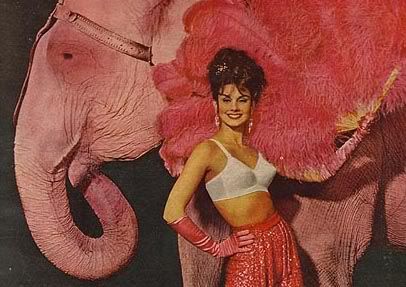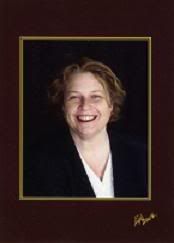"Forty-Seventh{*} in area and forty-sixth{} in population; a Middle Atlantic State; one of the thirteen original States bordering the Atlantic and Delaware Bay, Delaware has the distinction of being the flattest State in the Union, but its shore line is the site of numerous resort areas.
Before the coming of the white men, Delaware was inhabited by tribes of aborigines of the Lenni-Lenape stock. The English knew them as Delaware, from the name of the river. Of ancient and proud lineage, they were known as the "original people" and were accorded an honorific pre-eminence by the other eastern Algonquins, under the respectful title of "grandfathers of the red men." As the whites pressed upon them the Delawares gradually retired westward. On of their noted chiefs was Tammenend, from who the Tammany Society derives its name. The Nanticoke, a group similar to the Lenape, lived along the coast of Delaware. They suffered from the nearness of the Colonists and moved northward through Pennsylvania, taking the bones of the dead with them.
In 1609 Henry Hudson discovered Delaware Bay for the Dutch. The bay was so named c. 1610 by the Virginians in honor of their first Governor, Thomas West, Lord De Lla Warr, who is said to have entered the bay in the interest of England. The region was more thoroughly explored by Hendrickson, 1615-1616. The first settlement however made by members of the Dutch Company in 1631 was soon destroyed by the Indians. By 1638 the Swedes under Peter Minuit settled at the present site of Wilmington. The colony was known as New Sweden. The Swedes surrendered to Peter Stuyvesant, governor of New Netherland, 1655, but in 1664 Sir Robert Carr seized the Delaware territory for England. After William Penn was made proprietary of Delaware country in 1682 executive power remained with the Pennsylvania authorities until the American Revolution.
The State was, from early times, free of religious intolerance. This brought an influx of settlers: The Swedes and Dutch were followed by Finns, Scotch, Irish and English; by 1730 Wilmington was surveyed. Catholics were few in Colonial Delaware. The Apoquiniminck Mission in New Castle County was established before 1750 by Jesuits from Maryland, notably Father Ferdinand Farmer, the first priest known to have visited Catholic families at Dover, and Father Matthew Sittensperger who built St. Mary's at Coffee Run in 1772, the first Catholic Church in the State.
During the Revolution, Delaware furnished only two regiments but they were aamong the best in the service. Early settlers came mainly from the farming lands of Europe and when the fur trade with the Indians languished, agriculture became the prime occupation. The first cotton factory was at Broome, 1795. Truck farming and dairying supplying Philadelphia, New York and other large cities. The immigration boom of 1840-1880 brought skilled workers to industry. The State supported the Union in the Civil War although a number of citizens who favored slavery, sympathized with the Confederacy.
In 1816 Father Patrick Kenny built St. Peter's Church which later became the Cathedral Wilmington. The arduous labors and personality of Father Kenny have made him probably the best-known priest in the early Catholic history of the State. A school and orphanage were erected in 1930 by the Daughters of Charity (Emmitsburg, Md.) in Wilmington. The Diocese of Wilmington was erected in 1868 with Rt. Rev. Thomas A. Becker (1868-86) first bishop. He invited the Sisters of the Visitation to Wilmington (1869) where they opened an academy, taken over (1862) by the Ursulines, the Sisters of the Visitation remaining to follow a contemplative life.
The Benedictines from Newark, NJ, arrived for the spiritual care of the Germans at Sacred Heart Church, 1874, Wilmington. Poles, Portuguese, Italians and Greeks required priests of the various languages; the Sisters of St. Benedict came in 1880 to conduct schools. In 1889 Bishop Curtis (1886-1896) invited the Josephites to care for the colored. In 1903 Bishop Monaghan (1897-1925) introduced the Oblates of St. Francis de Sales, who opened a day school in Wilmington; and the Little Sisters of the Poor who opened a home for the aged at Wilmington.
The Felician (Franciscan) Sisters arrived from Buffalo, NY, 1897, at Wilmington where they conduct schools in two Polish parishes. The fourth bishop, Edmond J. Fitzmaurice (1925-) invited the Capuchin Fathers to Wilmington (1931) and the Norbertine Fathers to Claymont (1932) founding Archmere Academy. The See of Wilmington comprises the State of Delaware and Eastern Shores of Maryland and Virginia and is 8 percent{} Catholic. -- S.M."
- --
{} - there are a number of spots in this post I will amend with more recent data, as to population, %, etc. -- I just wanted to get some actual "typical blog" content up. I will also add, when I get a chance additional information, regards newer bishops, # of dioceses in the state -- there are some pretty good on line sources I can update the info with.
In quoting from the original source, I note that the term "colored" or "negro" is often used to refer to what we now normally would term as "black." In you are not in the know, please be advised until well up to the late 1960s, this was often the NONperjorative way to refer to blacks. I could substitute the word "black" but then that wouldn't be an exact quote, and people would known that the use would have been out of keeping with the time. So no offense is meant, in this or future "State history" type posts.
Thursday, November 26, 2009
Subscribe to:
Post Comments (Atom)



No comments:
Post a Comment
You can post anonymously, HOWEVER, please sign with a moniker like Jack or Jill-of-the-Amazing-Wolverine-Tribe, so I can tell one anon. user from another.